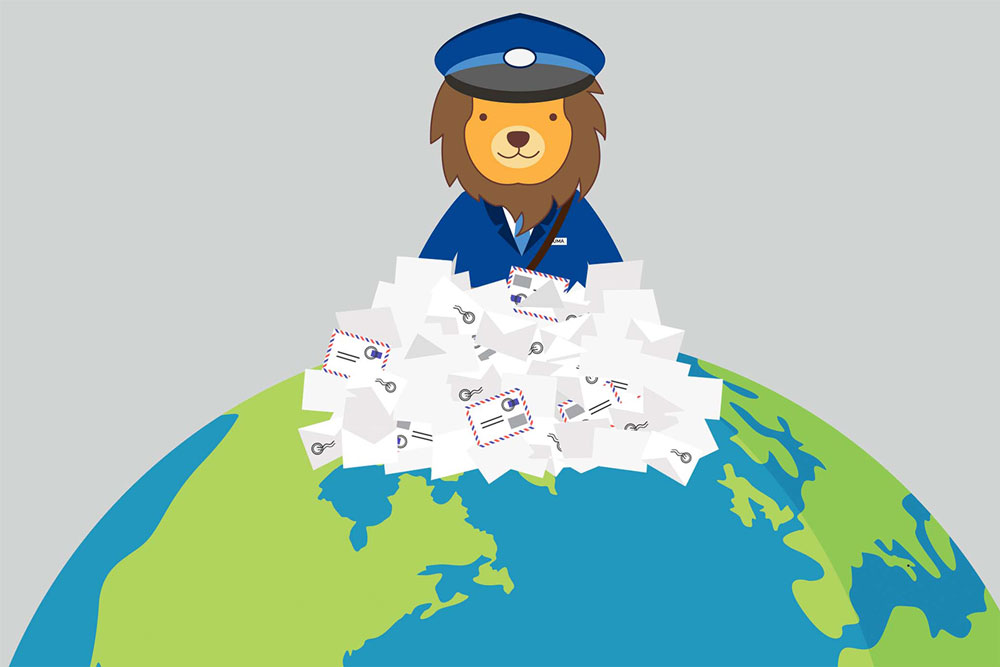
UAFS Mailbag: Earth Day
Written By: Ian Silvester
Welcome back to another edition of the UAFS Mailbag. Growing up in Colorado, I always had a water bottle. Old habits die hard – my water bottle is a “must have” accessory like my wallet, phone, and keys. While refilling my trusty Nalgene, I knew it was time to tackle a project that had been in the queue since the start of the year.
So, what better time to take this project than on Earth Day?
This year marks the 54th Earth Day. The idea for the holiday was the brainchild of Senator Gaylord Nelson of Wisconsin. Nelson and activist Denis Hayes organized campus events to teach students about sustainability and reducing environmental harm. They chose April 22 as Earth Day because it maximized student participation between spring break and finals.
Many laws, regulations, and agencies were formed at the same time as Earth Day, one being the creation of the Environmental Protection Agency, which was established only a few months after the first Earth Day in 1970. Twenty years after its inception, Earth Day 1990 saw participation from 200 million people from more than 140 countries. That number grew to over one billion people for Earth Day 2020 – the 50th anniversary – despite the COVID-19 pandemic moving many activities online.
You may be thinking, ‘OK, but how does UAFS do its part?’ And the answer was as clear as the water I poured into my water bottle.
Across the UAFS campus, there are nearly 50 water bottle refill stations – I know because I spent two hours walking 6.5 miles to go through each building on campus, floor by floor, to count.
What I found was incredible!
In 2021, Plant Operations began to replace traditional water fountains with a water fountain and water bottle refill station combination unit, which keeps track of the number of bottles refilled.
Not surprisingly, the two most frequently used stations were found in the RAWC and Smith-Pendergraft Campus Center. The downstairs station across from the weights had racked up 184,398 refills, and in the CC across from the food court, 129,957 bottles had been refilled.
The Math-Science building has the most stations with six, and combined, nearly 78,000 bottles had been refilled. Across the way, the Pendergraft Health Science building tallied slightly more refills with half the number of stations.
Since the installations began, our university has saved the planet from nearly one million single-use bottles from landfills. As of writing this mailbag, collectively, we have all eliminated the use of more than 838,000 single-use plastic water bottles.
That number is already one to celebrate, but I looked at a couple of things to put it into context.
First, how far would it take us if we lined up each bottle in a line? While I hoped for the moon, Tulsa would have to do it. On average, a 16.9 fluid-ounce plastic bottle is about eight inches long. Multiplied by the number of bottles we have eliminated, it equates to just under 106 miles, and in a straight line, the distance between Fort Smith and Tulsa is 104 miles.
I also looked at how long it takes for plastic to decompose. While numbers varied, it was anywhere between 450 and 500 years for a single-use plastic bottle to decompose. So again, I broke out the calculator to see how long it would take 838,000 bottles to break down one after the other. The answer: approximately 419 million years – wow! That’s a little shy of a tenth of how old the earth is.
If you were curious to know what was going on 419 million years ago, it placed us right in the middle of the Paleozoic era at the end of the Silurian Period and the beginning of the Devonian Period. Back then, the supercontinent of Gondwana, which became Australia, Antarctica, India, Arabia, South America, and smaller pieces of Florida, southern Europe, Turkey, Iran, Afghanistan, and Tibet, sat near the south pole. This time was also known as the “Age of Fishes,” as sea life began diversifying and evolving.
Sadly, I don’t have a way to see into the future, 419 million years, but I can say with certainty that UAFS has done an incredible job of ensuring there will be less plastic.
As I wrap up this mailbag, I’m encouraged by what the simple act of refilling a water bottle has done and will continue to do to help the environment. I hope you stop and think about your impact this Earth Day and add a water bottle to your everyday essential items.
If there is a question you’d like answered or a topic covered in an upcoming UAFS Mailbag, email the Office of Communications at communicationsFREEuafs.
Until next time,
Ian
- Tags:
- Sustainability
- UAFS Mailbag
- Earth Day
Media Relations
The UAFS Office of Communications fields all media inquiries for the university. Email Rachel.Putman@uafs.edu for more information.
Send%20an%20EmailRachel Rodemann Putman
- Director of Strategic Communications
- 479-788-7132
- rachel.putman@uafs.edu
